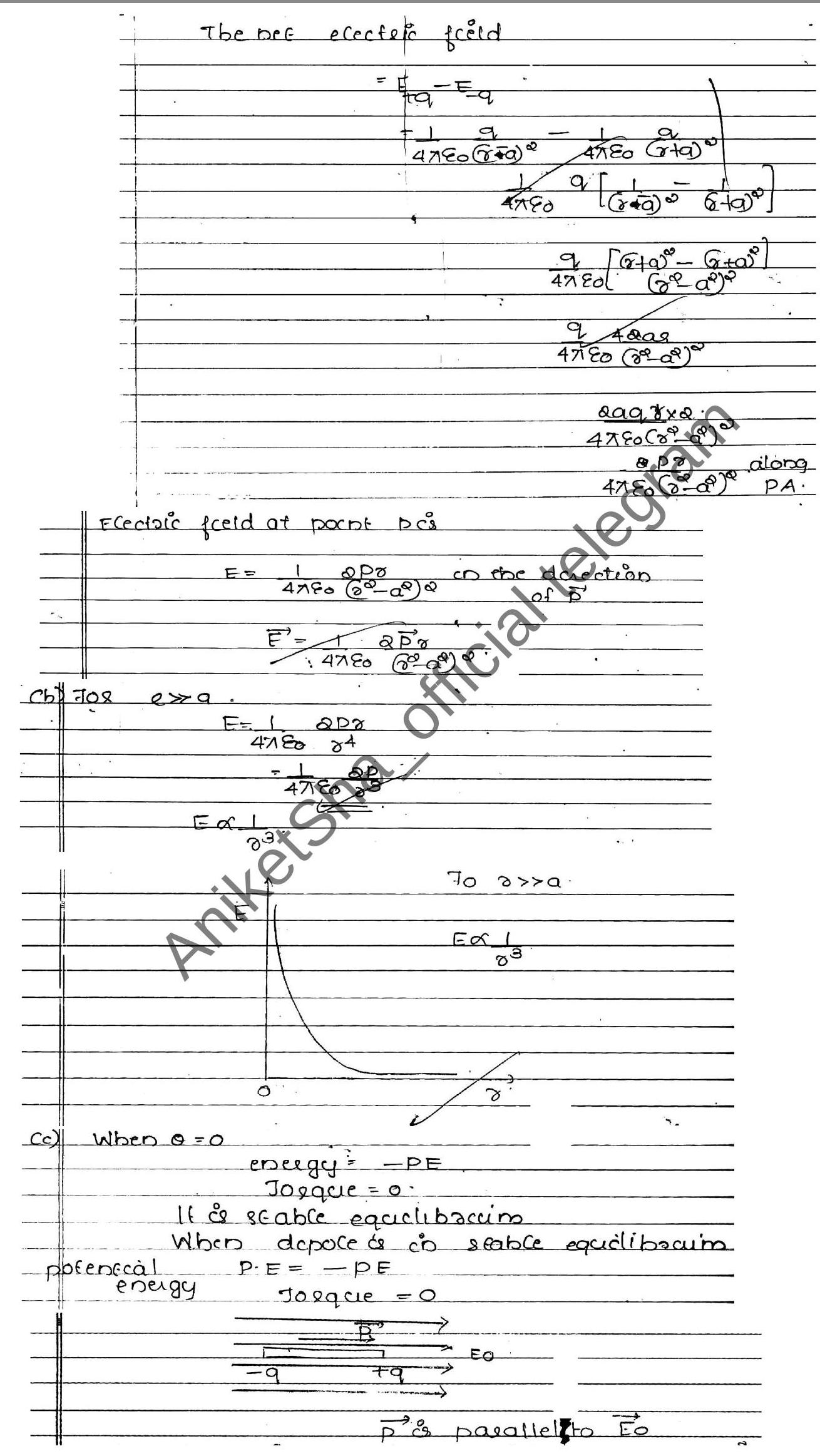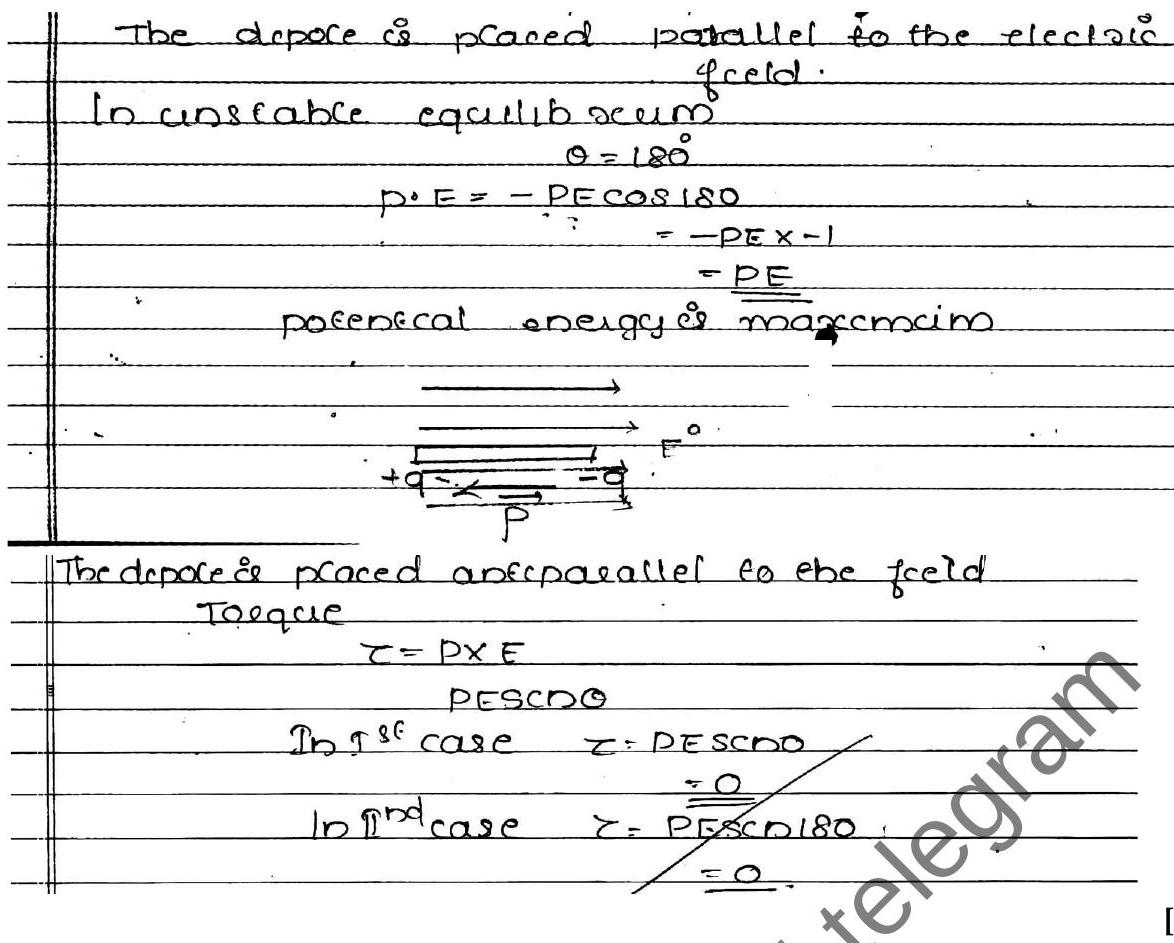Question: Q. 2. (i) Derive the expression for electric field at a point on the equatorial line of an electric dipole.
(ii) Two point charges
Show Answer
Solution:
Ans. (i) Derivation of expression for electric field.
(ii) Finding point on line joining charges 2
[CBSE Marking Scheme, 2017]
Detailed Answer :
(i) Try yourself, Similar to Q. 1 (i), Short Answer Type Questions-II.
(ii) Two point charges

Distance between the two charges,
Electric field at point
Magnitude of electric field at point
Now,
(Since net electric field at
AI Q. 3. (a) Derive an expression for the electric field
(b) Draw a graph of
(c) If this dipole were kept in a uniform external electric field
R [O.D. Set III 2017]
| Ans. |
|
|---|---|
| 二. | |
| Considee a depole haverig depole momenc | |
| P. Ececteic fceld due to pocnt |
|
| Fectsid fceld due to tq at the pocnl |
|


[Topper’s Answer 2017]






